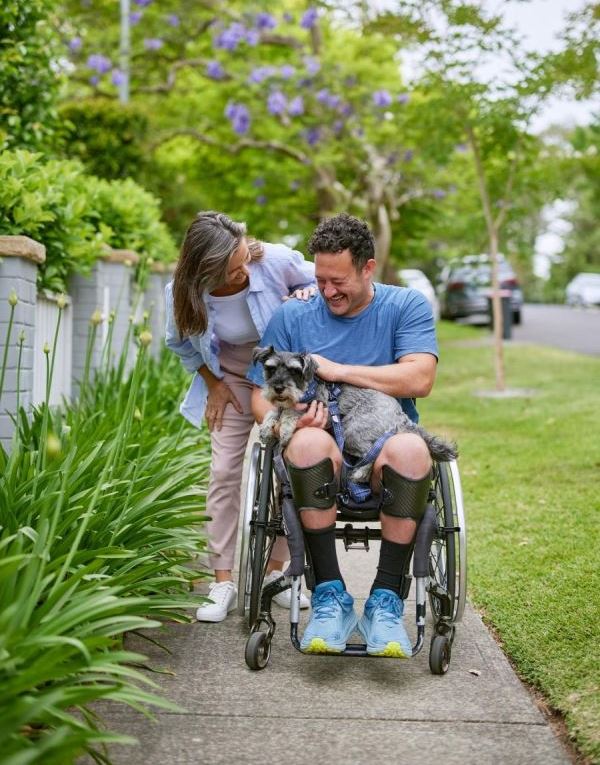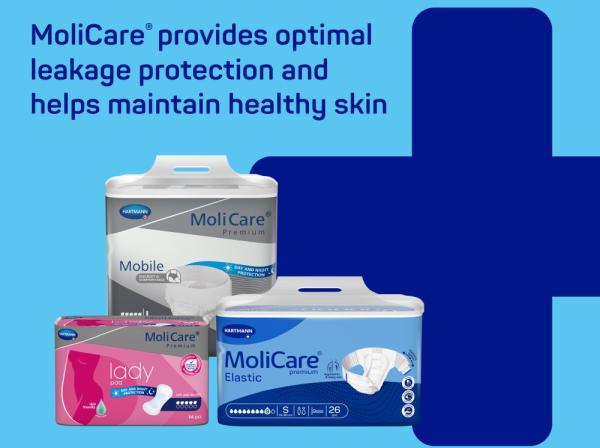Disability affects life in many unexpected ways. One of the most difficult side effects to manage is incontinence, which can range from a few small leaks to complete
bladder or bowel emptying.
What’s the link between incontinence and disability?
Disability can be physical or cognitive and means that a person may be unable to:
- Recognise that they need the toilet
- Find or access the toilet in time
- Remove clothing in time (1)
If you use a wheelchair, you may find it challenging to move on and off the toilet and to manage clothing. For people with an intellectual disability or memory problems, they may not be aware that they need to go or remember where the toilet is.
Managing Incontinence at Home
Home is your own environment, a place you and your carers can tailor to your needs. It can be helpful to think about how to address physical and cognitive barriers to access the toilet. Removing physical barriers can involve:
- Using a mobility aid to make walking easier
- Incorporating toileting aids like a raised seat or a swivel stool
- Opting for adaptive clothing that is easier to remove quickly
- Using wiping aids if it’s hard to reach when cleaning yourself
- A commode to help reduce the time to access the toilet
To address cognitive barriers, it can be helpful to:
- Make signs or pictures that help to locate and identify the toilet
- Ensure good lighting along the route to the bathroom
If you are caring for someone with incontinence, you can:
- Pay attention to any toileting cues, such as tugging at clothes or becoming restless
- Set alarms to ensure regular toilet trips (e.g. a little while after a meal)

Managing Incontinence Outside the Home
It can be more challenging to manage incontinence when you’re not at home. You may not have control over the environment you’re in, it is ideal to plan ahead to cope with unforeseen challenges. Planning ahead can include:
- Making a trip to the toilet before you leave home
- Knowing where the nearest toilets are – the National Public Toilet Map shows all public toilets across Australia, including those with wheelchair access
- Scheduling toilet stops before an urgent situation
- Packing all the supplies you need so you are prepared for unexpected situations
Choosing the Right Products
The right absorbent and skin care products can be a game-changer when it comes to disability associated urinary incontinence.
While there are a lot of products on the market, there are significant variations. Poor quality or misfitting products could make it harder to live with incontinence. This may lead to increased frequency of clean-ups, adverse effects on the skin, and difficulties in maintaining social life. It is so important to find a continence product that is the right style, absorbency and size to contain every episode of incontinence. Why? Because the right product supports comfort, dignity, security, confidence – and that translates to an improved quality of life.
If you are not sure which product is right for you (or the person you care for), then please consider a Continence Assessment with a Specialist Continence Nurse or call Surgical House customer service to discuss. MoliCare can provide free samples for a trial of various sizes and absorbencies.
Proper skin care is essential to help prevent or reduce Incontinence Associated Dermatitis (IAD). Regular exposure to urine and faeces alters your skin’s pH level (2) and can damage your skin’s protective barrier, the acid protection mantle, causing irritation, pain and discomfort.(3)

Supplementing your child's diet with oral nutritional supplements such as PediaSure may help you provide texturally consistent, complete and balanced nutrition to your child with sensory sensitivities.
The products in the MoliCare Skin range are formulated to clean, protect and care for skin made vulnerable by incontinence. Our products are specifically designed to help maintain healthy skin and reduce the risk of irritation. We encourage you to explore our MoliCare Skin Care range at Surgical House.
View the MoliCare range of absorbent continence products and skin integrity products.
To discuss your concerns with a Continence Nurse Specialist to develop a personalised care plan download our information flyer:
Content for this article was supplied by HARTMANN MoliCare®
References:
- Continence Foundation of Australia, Disability associated urinary incontinence [Accessed 7 July 2023]
- MoliCare, pH and incontinence [Accessed 7 July 2023]
- Healthline, What is incontinence-associated dermatitis and how is it treated? [Accessed 7 July 2023]
Disclaimer
This website does not provide medical advice. The information, including but not limited to, text, graphics, images, and other material contained on this website, is for informational purposes only. No material on this site is intended to be a substitute for professional medical advice, diagnosis, or treatment. Always seek the advice of your physician or other qualified health care provider with any questions you may have regarding a medical condition or treatment and before undertaking a new health care regimen. Never disregard professional medical advice or delay in seeking it because of something you have read on this website.

